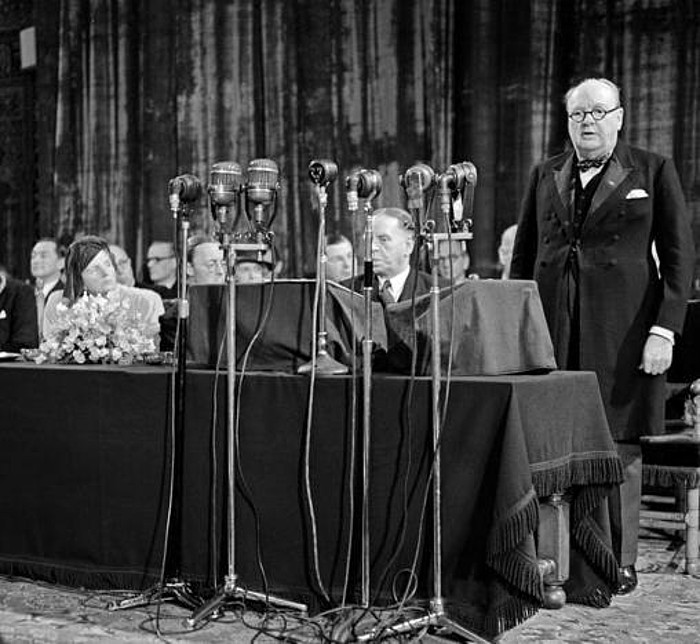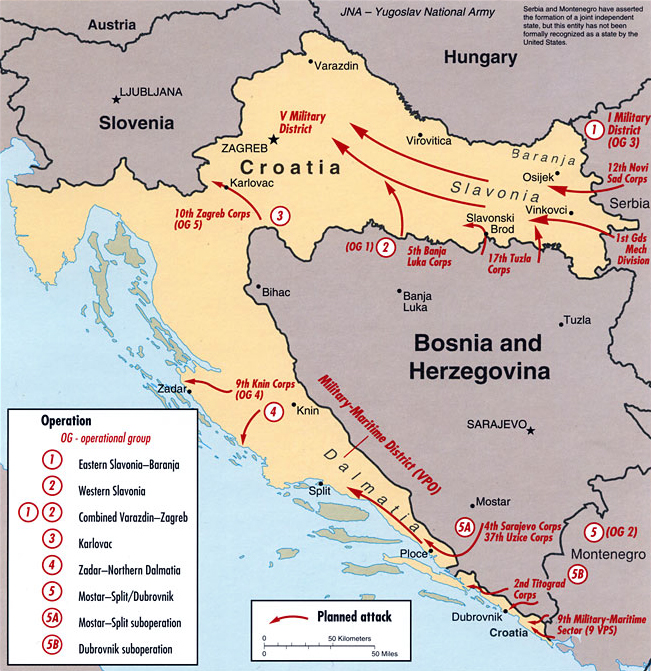|
Ostrožin
Ostrožin ( sr-cyr, Острожин) is a village in central Croatia, in the municipality of Gvozd, Sisak-Moslavina County. It is connected by the D6 highway. History The Ostrožin Rulebook (Croatian: Ostrožinski pravilnik) was adopted on 14 December 1941 in Ostrožin. Predating the Foča Regulations by more than a month, the Ostrožin Rulebook was the first legal act which regulated the new national authority in the liberated territories during the national liberation war of Yugoslavia. Demographics According to the 2011 census, the village of Ostrožin has 32 inhabitants. This represents 8.14% of its pre-war War is an armed conflict between the armed forces of states, or between governmental forces and armed groups that are organized under a certain command structure and have the capacity to sustain military operations, or between such organi ... population according to the 1991 census. According to the 1991 census,Izdanje Državnog zavoda za statistiku RH: Nar ... [...More Info...] [...Related Items...] OR: [Wikipedia] [Google] [Baidu] |
Gvozd
Gvozd ( sr-Cyrl, Гвозд) is a municipality in central Croatia, Sisak-Moslavina County. Its seat is located in Vrginmost (Вргинмост), which was renamed to Gvozd from 1996–2012. It is an underdeveloped municipality which is statistically classified as the First Category Area of Special State Concern by the Government of Croatia. Languages and names Croatian is the official first language. Serbian language with its Cyrillic alphabet is the officially recognised second language. As of 2023, most of the legal requirements for the fulfillment of bilingual standards have not been carried out. Official buildings do have Cyrillic signage, but not street signs, traffic signs or seals. Cyrillic is not used on any official documents, nor are there public legal and administrative employees proficient in the script. In Cyrillic, Vrginmost is known as ''Вргинмост'' and (between 1996 and 2012) Gvozd as ''Гвозд''. History In 1097, the last native Croatian King Peta ... [...More Info...] [...Related Items...] OR: [Wikipedia] [Google] [Baidu] |
Ognjeslav Utješenović
Ognjeslav Utješenović Ostrožinski (spelled Utješinović in some sources; sr-Cyrl, Огњеслав Утјешеновић Острожински; 21 August 1817 – 8 June 1890) was a Croatian Serb politician and writer. He is mainly remembered for his role in the Illyrian movement led by Ljudevit Gaj which promoted unity among South Slavs and called for Croatia's independence at the time when the country was part of Austria-Hungary. Biography Born in Ostrožin (part of Gvozd) in the Kordun region (which was at the time part of the Croatian Military Frontier), Utješenović graduated in law from the University of Zagreb. He worked as an advisor to Josip Jelačić at the Zagreb military command and was a member of the Croatian parliament's legislation committee which created the bills on the establishment of the Croatian army and the abolishment of the Military Frontier and its merger with Croatia. Upon the defeat of the Hungarian Revolution of 1848 Jelačić appointed him ... [...More Info...] [...Related Items...] OR: [Wikipedia] [Google] [Baidu] |
Council Of Europe
The Council of Europe (CoE; , CdE) is an international organisation with the goal of upholding human rights, democracy and the Law in Europe, rule of law in Europe. Founded in 1949, it is Europe's oldest intergovernmental organisation, representing 46 member states from Europe, with a population of approximately 675 million ; it operates with an annual ordinary budget of approximately 500 million euros. The organisation is distinct from the European Union (EU), although people sometimes confuse the two organisations – partly because the EU has adopted the original Flag of Europe, European flag, designed for the Council of Europe in 1955, as well as the Anthem of Europe, European anthem. No country has ever joined the EU without first belonging to the Council of Europe. The Council of Europe is an official United Nations General Assembly observers, United Nations observer. Unlike the EU, the Council of Europe cannot make binding laws; however, the council has produced a numbe ... [...More Info...] [...Related Items...] OR: [Wikipedia] [Google] [Baidu] |
Croatia
Croatia, officially the Republic of Croatia, is a country in Central Europe, Central and Southeast Europe, on the coast of the Adriatic Sea. It borders Slovenia to the northwest, Hungary to the northeast, Serbia to the east, Bosnia and Herzegovina and Montenegro to the southeast, and shares a maritime border with Italy to the west. Its capital and largest city, Zagreb, forms one of the country's Administrative divisions of Croatia, primary subdivisions, with Counties of Croatia, twenty counties. Other major urban centers include Split, Croatia, Split, Rijeka and Osijek. The country spans , and has a population of nearly 3.9 million. The Croats arrived in modern-day Croatia, then part of Illyria, Roman Illyria, in the late 6th century. By the 7th century, they had organized the territory into Duchy of Croatia, two duchies. Croatia was first internationally recognized as independent on 7 June 879 during the reign of Duke Branimir of Croatia, Branimir. Tomislav of Croatia, Tomis ... [...More Info...] [...Related Items...] OR: [Wikipedia] [Google] [Baidu] |
Croatian War Of Independence
The Croatian War of Independence) and (rarely) "War in Krajina" ( sr-Cyrl-Latn, Рат у Крајини, Rat u Krajini) are used. was an armed conflict fought in Croatia from 1991 to 1995 between Croats, Croat forces loyal to the Government of Croatia—which had declared Independence of Croatia, independence from the Socialist Federal Republic of Yugoslavia (SFRY)—and the Serbs, Serb-controlled Yugoslav People's Army (JNA) and Serbs of Croatia, local Serb forces, with the JNA ending its combat operations by 1992. A majority of Croats supported Croatia's independence from Yugoslavia, while many ethnic Serbs living in Croatia, supported by Republic of Serbia (1992–2006), Serbia, opposed the secession and advocated Serb-claimed lands to be in a common state with Serbia. Most Serbs sought a new Serb state within a Yugoslav federation, including areas of Croatia and Bosnia and Herzegovina with ethnic Serb majorities or significant minorities, and attempted to conquer as muc ... [...More Info...] [...Related Items...] OR: [Wikipedia] [Google] [Baidu] |
Yugoslavia
, common_name = Yugoslavia , life_span = 1918–19921941–1945: World War II in Yugoslavia#Axis invasion and dismemberment of Yugoslavia, Axis occupation , p1 = Kingdom of SerbiaSerbia , flag_p1 = State Flag of Serbia (1882-1918).svg , p2 = Kingdom of MontenegroMontenegro , flag_p2 = Flag of the Kingdom of Montenegro.svg , p3 = State of Slovenes, Croats and Serbs , flag_p3 = Flag of the State of Slovenes, Croats and Serbs.svg , p4 = Austria-Hungary , flag_p4 = Flag of Austria-Hungary (1867-1918).svg , p7 = Free State of FiumeFiume , flag_p7 = Flag of the Free State of Fiume.svg , s1 = Croatia , flag_s1 = Flag of Croatia (1990).svg , s2 = Slovenia , flag_s2 = Flag of Slovenia.svg , s3 ... [...More Info...] [...Related Items...] OR: [Wikipedia] [Google] [Baidu] |
Foča Regulations
Foča ( sr-Cyrl, Фоча, ) is a town and municipality in Republika Srpska, Bosnia and Herzegovina, located in the south-east on the banks of Drina river. As of 2013, the town has a population of 12,234 inhabitants, while the municipality has 18,288 inhabitants. Foča houses some faculties (including the Medical and Orthodox Theological Faculty of Saint Basil of Ostrog) from the Istočno Sarajevo University. It is also home to the "Seminary of Saint Peter of Sarajevo and Dabar-Bosna", one of seven seminaries in the Serbian Orthodox Church. Foča was also, until 1992, home to one of Bosnia's most important Islamic high schools, the Madrasa of Mehmed Pasha Kukavica. The Sutjeska National Park, which is the oldest National Park in Bosnia and Herzegovina, is located in the municipality. History Early history The first written traces of the name Foča date back to 1336. The town was known as Hotča or Hoča during medieval times. It was then known as a trading centre on route betw ... [...More Info...] [...Related Items...] OR: [Wikipedia] [Google] [Baidu] |


